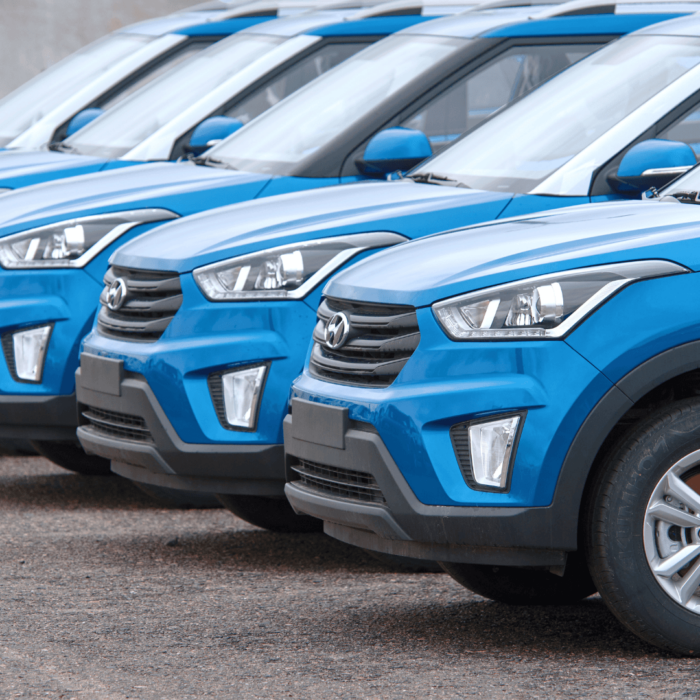Team Cardata
7 mins
The 8 Biggest Drivers of Fleet Cost-Per-Mile (and How Reimbursement Programs Shrink Them)
Discover some of the drivers of expensive fleet operations, and how FAVR could help with costs.

Introduction
Did you know that a brand-new vehicle loses roughly thirty percent of its value the instant it rolls off the dealership lot? That single moment of depreciation is the result of a combination of different factors, both direct and hidden, that push the cost of owning and operating a fleet higher and higher. Fleet managers need to wrestle with both the visible line items on an income statement, and the concealed costs that quietly erode margins. From surging vehicle acquisition prices to mounting insurance liabilities, each pressure point inflates cost-per-mile (CPM).
By contrast, a well-designed vehicle reimbursement program—particularly fixed and variable rate (or FAVR) programs—transfers many of those pressures away from the balance sheet and onto predictable, tax-efficient payments to employees. The sections that follow will outline each cost, and then show how reimbursement programs can help control or lower it.
Direct Cost Drivers Can’t Ignore
Depreciation and Vehicle Acquisition
Sticker shock has become routine when it comes to buying a new vehicle. The average purchase price of a new vehicle jumped from $35,400 in 2021 to $44,888 in 2022, a 22.3 percent leap in just a single year.
Fleets are about thirty percent more expensive than FAVR programs because the employer absorbs not only the significant purchase price, but also accelerated depreciation and residual-value risk on resale. Even leasing cars, often marketed as a hedge, simply repackages the same risks as excess-mileage, damage, and early-termination fees passed back to the business. Tax rules from the IRS can compound the financial struggle: under MACRS, passenger vehicles face annual depreciation caps that rarely match real-world market devaluation, tying up working capital in timing differences.
Fuel
Fuel typically represents a significant portion of costs in operating any fleet. Even though route optimization and driver coaching can help trim this amount, owning a fleet of vehicles still makes businesses vulnerable to every spike in price. By contrast, the IRS standard mileage rate embeds nationwide fuel averages, meaning reimbursements float naturally with the market and insulate the company from direct volatility.
Companies that adopt accountable software platforms can benefit from fuel cost reductions, thanks to accurate GPS and route optimization. Moving from gasoline engines to electric vehicles amplifies the gain, cutting fuel costs by around fifty-five percent.
Maintenance and Repairs
Preventive maintenance, including things like oil changes, brake inspections, and tire rotations, can help extend vehicle life. They’re also essential to helping stave off catastrophic failure. Fleet repairs can be expensive, with the City of New York finding the annual outlay averages $1,600 per gasoline car versus only $400 for an EV.
Companies that keep fleets in-house also shoulder the administrative burden of scheduling service and policing fraud, whereas fleet cards with merchant controls merely contain rather than eliminate the exposure.
Hidden Costs That Creep Into CPM
Insurance and Liability
Commercial auto premiums often double comparable personal policies because underwriters price in higher cargo and vicarious liability. Company ownership magnifies the risk: every accident lands directly on the corporate balance sheet.
In contrast, FAVR shifts first-line coverage to employees’ personal insurance, materially shrinking both exposure and umbrella premiums. Layering in defensive-driving courses and regular motor-vehicle-record checks further suppresses claims frequency and can even earn premium credits.
Downtime and Productivity
A vehicle parked in a repair bay produces zero revenue. Unplanned downtime delays service calls and often forces costly rental substitutes. Telematics platforms paired with AI-enabled dashcams and defensive driving can cut safety incidents by fifty-two percent, keeping cars—and employees—safe and productive.
Administration and Compliance
Procurement, titling, registration, fuel-card reconciliation, and risk management demand specialized expertise. Companies that run these tasks in-house spend roughly fifty percent more, compared to businesses that outsource to a reimbursement provider.
Automated mileage apps alone can be a massive saver of time and money. Vehicle reimbursement software can hand back forty-two hours per driver each year, which can be spent on revenue-generating activities. Crucially, IRS-compliant FAVR payments remain entirely tax-free, sparing both employer and employee the thirty-percent payroll drag that punishes flat allowances.
Safety and Accident Costs
Motor vehicle crashes are the leading cause of work-related fatalities in the United States. Even beyond the tragic impact, each fatality carries direct costs of about $70,000. This amount excludes litigation, brand damage, and lost morale.
Reimbursement programs can help by reducing time on the road and can even incentivize safer personal vehicle choices. All of this can help lower the statistical probability and severity of accidents.
Sustainability and EVs
In the United States, transportation accounts for twenty-eight percent of U.S. greenhouse-gas emissions. By replacing traditional vehicles with EVs, your company can cut both carbon output and operating costs. Plus, federal clean vehicle credits of up to $7,500 accelerate the payback.
Regulatory momentum within states can add even more urgency. For example, in California, the state will prohibit new light-duty gasoline sales by 2035 under its Advanced Clean Cars II rule. Knowing about regulation and changes as soon as they happen can help early adopters claim on utility rebates and HOV-lane privileges.
How Vehicle Reimbursement Programs Slash CPM
FAVR programs systematically dismantle each of the cost drivers described above. By reimbursing drivers for the fixed costs of ownership—insurance, depreciation, registration—plus the variable costs of actual business mileage, FAVR cuts overall fleet expenditure by twenty-five to thirty percent and saves as much as $16k per year per driver compared with flat allowances. Hybrid reimbursement structures extend the benefit: high-mileage employees receive FAVR, while occasional drivers receive cents-per-mile payments, a blend that maximizes fairness without sacrificing cost control.
Because reimbursements float with fuel indices and local cost factors, budgets remain intact even when gasoline prices spike. Meanwhile, transferring ownership to employees frees capital, erases residual-value risk, and improves return on assets by removing vehicles from the balance sheet.
Actionable Next Steps
To get started, begin with a forensic audit of your present cost-per-mile across each of the eight cost buckets described above; the exercise pinpoints the quickest wins. Next, model a FAVR or hybrid reimbursement program against the status quo to quantify savings. Reinforce the model with preventive-maintenance schedules, telematics, and defensive-driving training to suppress hidden costs further.
It may also be worthwhile to evaluate EV adoption in tandem with federal and state incentives to decarbonize while lowering fuel spend. Finally, outsourcing administration and deploying an automated mileage capture app and vehicle reimbursement software, such as Cardata, can help reclaim staff hours and maintain iron-clad IRS compliance.
Conclusion
The rapid depreciation that strikes the moment a new car leaves the lot is not an isolated event; it is the opening salvo in a barrage of costs that silently inflate fleet CPM. Vehicle reimbursement programs—especially FAVR—offer a proven antidote. They convert volatile, capital-intensive ownership costs into predictable, tax-efficient payments that align employee behavior with corporate goals. Companies ready to switch can unlock double-digit savings, mitigate risk, and accelerate their journey toward a greener, more profitable future.
Disclaimer: Nothing in this blog post is legal, accounting, or insurance advice. Consult your lawyer, accountant, or insurance agent, and do not rely on the information contained herein for any business or personal financial or legal decision-making. While we strive to be as reliable as possible, we are neither lawyers nor accountants nor agents. For several citations of IRS publications on which we base our blog content ideas, please always consult this article: https://www.cardata.co/blog/irs-rules-for-mileage-reimbursements. For Cardata’s terms of service, go here: https://www.cardata.co/terms.
Share on:

